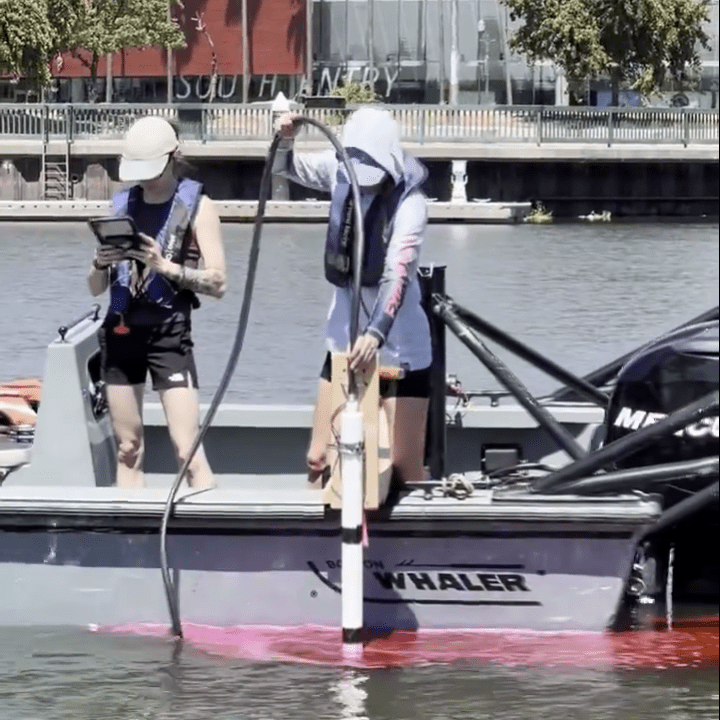A lake in Northern California is getting a dye job, but it’s not to improve its aesthetic. No, this makeover will serve an important function.
Researchers from the California Department of Water Resources are dyeing McLeod Lake in downtown Stockton, turning it from its greenish-blue hue to a muted pink.
It’s part of a study that researchers hope will shed some light on a question that they’ve been unable to answer themselves:
Why do harmful algal blooms happen some years, but not others?
In 2022, McLeod Lake was the site of a harmful algal bloom that turned the waters into a vibrant shade of green. But in 2024, the lake is fine, much to the surprise of researchers.
So, what gives?
“This year is an above normal water year type, and we did expect to see blooms out here. We’re a little bit surprised that we haven’t, and so we’re not quite sure why, but we’re hoping that this study can help inform that,” said Ellen Preece, senior environmental scientist at DWR.
DWR scientists added rhodamine dye to McLeod Lake earlier this week to track how water flows in and out of the lake and how it behaves differently at various depths.
Video shared by DWR on social media showed the progress of the harmless pigment as it spread throughout the lake. It was expected to turn the entire Stockton waterfront into a fuschia-esque color before dissipating throughout Thursday, officials said.


McLeod Lake is considered a “hotspot” for cyanobacteria and harmful algal blooms, Preece said. She hopes that by tracking the dye as it spreads throughout the lake, scientists will be able to have a better understanding of these blooms and one day develop a forecasting model to predict when and where they might form in the future.
“Algal blooms are of concern because they can produce toxins that are harmful to pets and humans and aquatic life, and we want to try to find ways to mitigate them or prevent them from occurring,” Preece said.
DWR plans to dye the lake again in early 2025, hoping to compare how the dye moves throughout the lake in both a dry time of year — now — versus the wetter months.
For more information on algal blooms in California, click here.


